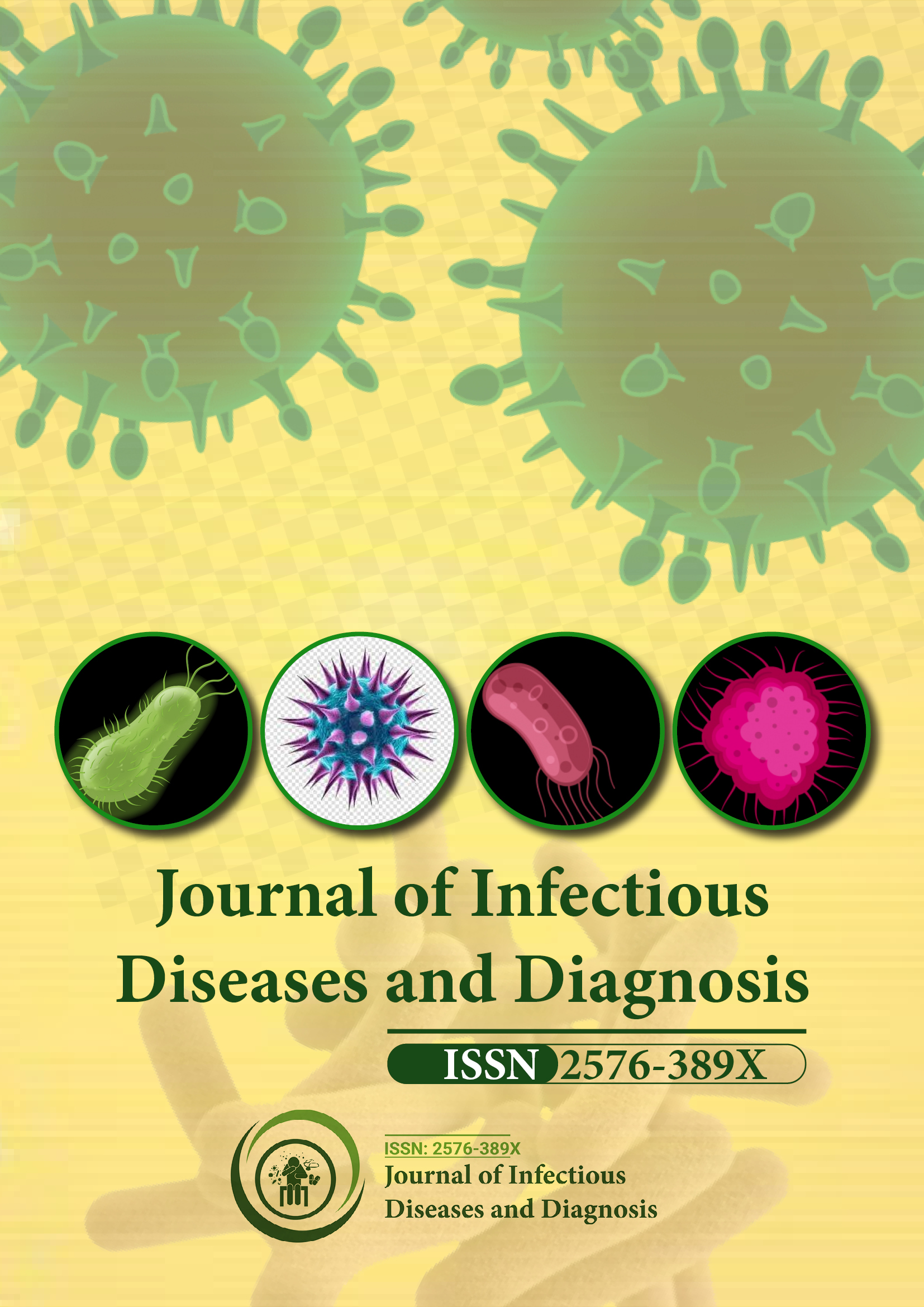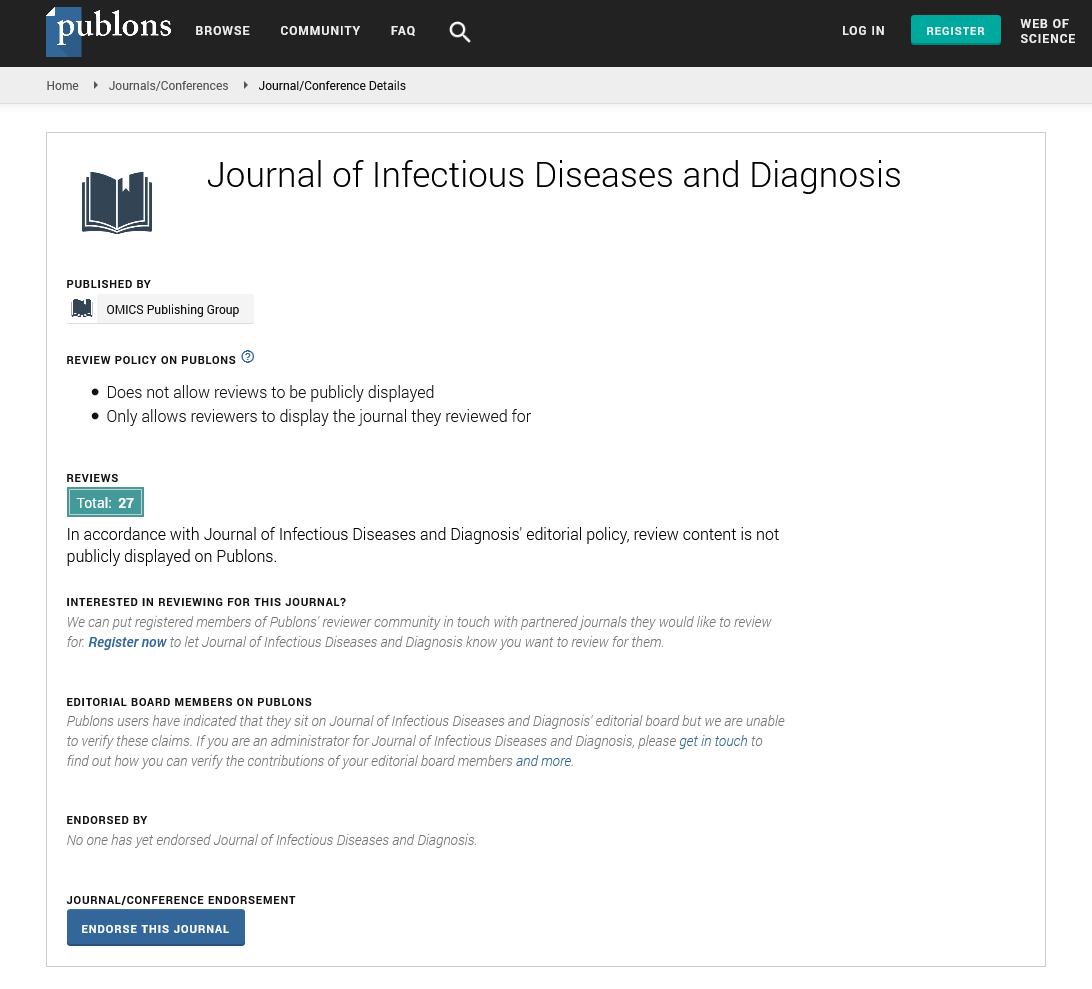Indexed In
- RefSeek
- Hamdard University
- EBSCO A-Z
- Publons
- Euro Pub
- Google Scholar
Useful Links
Share This Page
Journal Flyer

Open Access Journals
- Agri and Aquaculture
- Biochemistry
- Bioinformatics & Systems Biology
- Business & Management
- Chemistry
- Clinical Sciences
- Engineering
- Food & Nutrition
- General Science
- Genetics & Molecular Biology
- Immunology & Microbiology
- Medical Sciences
- Neuroscience & Psychology
- Nursing & Health Care
- Pharmaceutical Sciences
Commentary - (2022) Volume 7, Issue 3
COVID-19 Pandemic's Impact on Other Respiratory Virus Outbreaks
Received: 02-May-2022, Manuscript No. JIDD-22-17151; Editor assigned: 04-May-2022, Pre QC No. JIDD-22-17151 (PQ); Reviewed: 18-May-2022, QC No. JIDD-22-17151; Revised: 25-May-2022, Manuscript No. JIDD-22-17151 (R); Published: 02-Jun-2022, DOI: 10.35248/2576-389X.22.07.174
About the Study
Many nations are taking serious prophylactic steps to stop the coronavirus disease (COVID-19) pandemic. Not just COVID-19 but also other infectious respiratory diseases that can be avoided by practising good hygiene can be affected by these measures. Given their high incidence and morbidity, it is crucial to assess the real impact of these therapies on the incidence of other respiratory viral illnesses.
The strategy taken to combat the coronavirus disease (COVID-19) pandemic may have an impact on other virus outbreaks. Any changes in their frequency, however, have not been assessed. The goal of this study was to see if the COVID-19 management policy affects the rates of other respiratory viruses testing positive. For the past 10 years, we used data from the Korea Influenza and Respiratory Viruses Surveillance System's weekly reports on eight viruses: Adenovirus, Human Boca virus, Human coronavirus, Human metapneumovirus, Human rhinovirus, Influenza virus, Para influenza virus, and Respiratory syncytial virus.
There has been a decrease in the incidence of respiratory viral infections, according to a report by the Korea Centers for Disease Control and Prevention (KCDC) on the number of infectious diseases until April 2020 based on data from the Korea Influenza and Respiratory Viruses Surveillance System (KINRESS). In 2019–2020, the influenza outbreak ended 12 weeks earlier than in 2018–2019. Following the COVID-19 outbreak, tight personal cleanliness measures, as well as bans and limits on international travel, contributed to these trends.
When the interventions were put in place during the COVID-19 outbreak in late January, the seasonality of respiratory viruses appeared to be the main issue. The yearly pattern of respiratory virus outbreaks may have changed as a result of COVID-19 preventative initiatives. As a result, winter virus-related illnesses became less common in 2020. The COVID-19 pandemic did not, however, result in a change in the frequency of viral infections, which are common in all seasons. Furthermore, RSV outbreaks generally happen in the early winter; however COVID-19 did not appear during this season.
It's possible that some viruses that are more common in the summer or fall have not undergone thorough analysis. The sentinel surveillance system also only monitors patients who enter hospitals. The outbreaks of respiratory viral infections may have been influenced by additional confusing variables. The spread of respiratory and waterborne illnesses can be halted by using personal hygiene techniques including hand washing and mask use. This study, which showed a drop in the frequency of respiratory virus infections countrywide, allowed us to underline the value of preventive treatments. Even if the COVID-19 epidemic is contained, ongoing publicity campaigns to spread the word about the advantages of preventative actions will be necessary.
The overall positive rate of the respiratory viral infection was 38.7% in 2020 and 62.0% in 2010–2019. The positive rates of respiratory viruses with seasonality decreased during the COVID-19 pandemic. Although the positive rate increased significantly in the early weeks, the changes after week 5 were not significant. This phenomenon may be attributed to the strict COVID-19 control measures.
Citation: Stewart J (2022) COVID-19 Pandemic's Impact on Other Respiratory Virus Outbreaks. J Infect Dis Diagn. 7:174.
Copyright: © 2022 Stewart J. This is an open-access article distributed under the terms of the Creative Commons Attribution License, which permits unrestricted use, distribution, and reproduction in any medium, provided the original author and source are credited.

